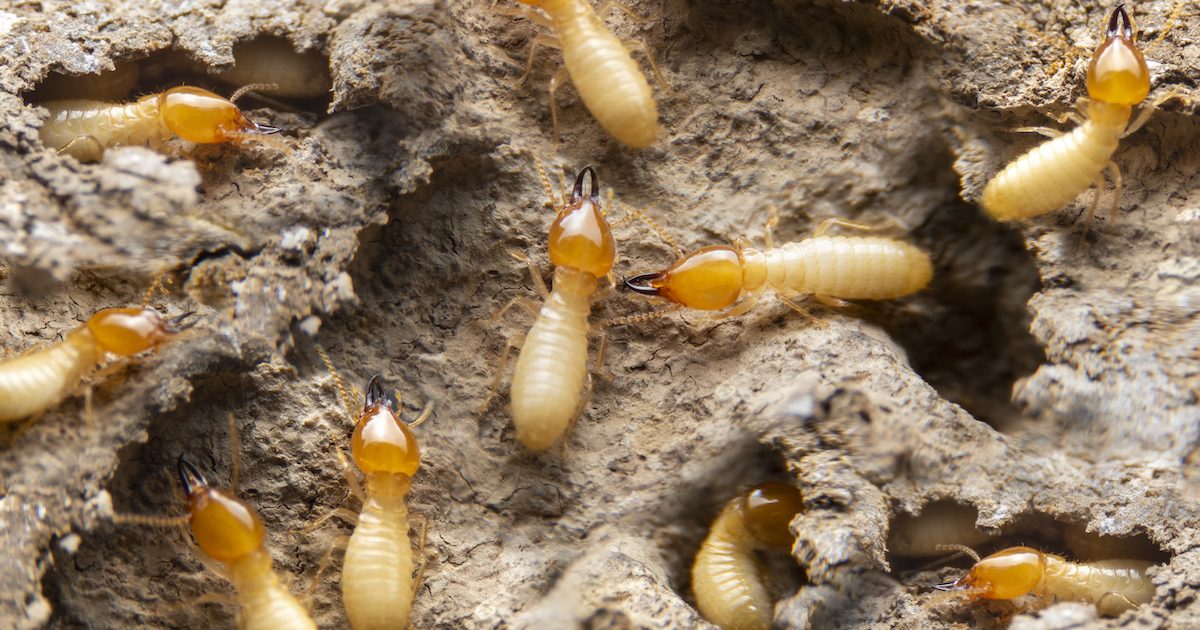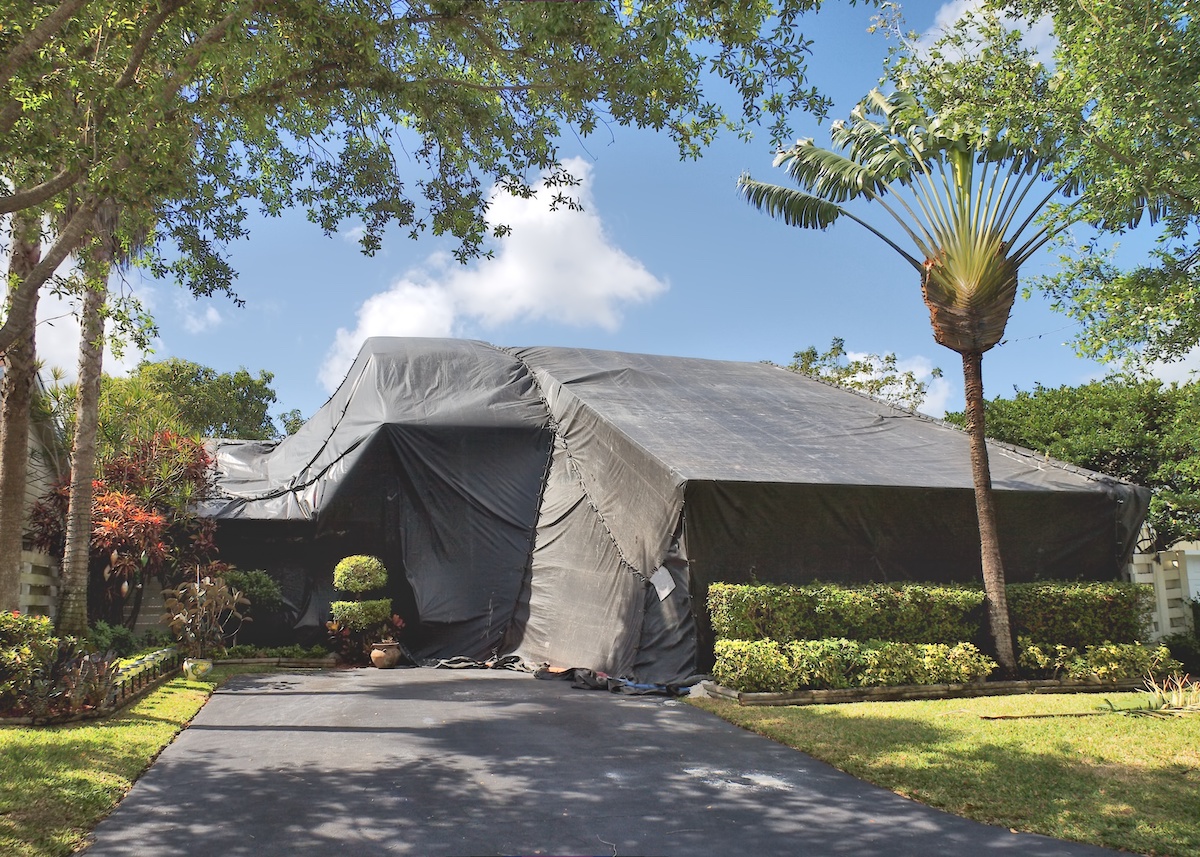
Are you concerned about termites in Florida? Termites can wreak havoc on both the interior and exterior of your home. When it comes to dealing with termites in Florida, you might be wondering what to do when you find them and how to get rid of them.
Drive-Bye Exterminators are the local experts in dealing with termites and the ailments that come along with them. In this blog, we’ll discuss the truth about termites and everything you need to know—including how to get rid of termites.
What are Termites?
Termites are insects that are considered as one of the most destructive for homeowners. Unfortunately, these are pests that you will typically find in homes throughout Florida. They’re small, about 3 to 4 mm in length. You usually only see them when the infested wood in your home is broken open.
Two Types Of Termites
There are generally two types of termites, worker and swarmer termites. Worker termites are creamy colors and these are the ones that you see when the wood is broken open.
Meanwhile, the swarmer termites are the reproductive cast of The Colony. They are a little larger, coming in at about 4 mm in length. They are also dark brown or black in color. Some termites have wings, although swarmer termites usually lose their wings after emergence.
What are the Termites in Florida?
The hot and humid climate of Florida is unfortunately ideal for several types of termites. Our state is home to 3 main types: drywood termite, dampwood termites, and subterranean termites.
Subterranean Termites
Subterranean termites are the most common types of termites in Florida. Unfortunately, they are also the most severe when it comes to the destruction of the home.
These insects live in colonies with workers, soldiers, and reproductive, also known as swarmers.
The swarmer subterranean termites form with full wings and eyes. They also fly to new locations to start their colonies.
You will find subterranean termites forming nests in soil and damp wood that is also in contact with the soil. These termites will build mud tubes that run from the soil up inside the wood.
Subterranean termites in Florida are ruthless and will destroy most of everything that comes in their way. They will eat any type of material that contains cellulose, dead or rotting wood, along with paper, cotton, and even plant fibers.
The most common subterranean termites in North America come from the genus Reticulitermes. While they are not the most aggressive form of termite, they are quite destructive and should not be ignored when spotted.
Beware of the Formosan Subterranean Termite
The most destructive subterranean termite is the Formosan termite. This type of termite forms huge colonies and it is very aggressive. It also destroys the wood of your home at a very rapid rate.
With its highly destructive behavior, this type of termite earned the nicknamed ‘Super Termite.’
Drywood Termites
One of the other termites found in Florida is a drywood termite. Drywood termites live in colonies, but they do not nest in soil like their Subterranean counterparts.
Drywood termites live and flourish in wood structures. Drywoods are also later than subterranean termites, coming in a shape that is more cylinder.
With termites in Florida, most species of drywoods is the West Indian drywood termite.
Dampwood termites
Third type of termites you’ll find in Florida is the dampwood termite. The most common you’ll find in Florida comes from the neus Noetermes.
Dampwood termites like high humidity. They’re quite common in southern Florida, especially the Keys. Infestations are common when there is wood-to-soil contact or when the wood is in constant contact with water, such as a leak or free-standing water.
Dampwood termites are also quite large. They are bigger than both drywood termites and subterranean termites.
Do You Have A Termite Infestation?
Now that you know about the common types of termites in Florida, let’s talk about signs of infestation.
A termite infestation is no laughing matter. It also cannot be swept under the rug. The truth is that termites are extremely destructive insects that can cost thousands of dollars in damage to your home.
A single termite won’t cause much damage, but colonies are what you need to worry about. A termite colony can consume up to a pound of wood each day.
While this doesn’t sound like much, the problem is that termites can go undetected for a long period of time. As termites live for about two years, imagine how much wood can be consumed by an entire colony at that time frame.
Since termites can destroy your home right under your nose, how are you supposed to know it’s happening? Thankfully, there are several signs you can notice before it’s too late.
Common Signs of Termite Infestation
What are the signs of a termite infestation in Florida? You’ll want to look for the following:
Discarded Termite Wings
We mentioned earlier that swarmer termites have wings. These are the reproductive wing termites of colonies.
One way of telling that you are dealing with a termite infestation is noticing discarded wings around your home. You might find this is in the spring when they emerge from their nests, searching for a new location to begin a colony. You’ll typically find these wings on windowsills and near doors.
Mud Tubes
Mud tubes are one of the ways that termites gain access to the wood of your home. Subterranean termites build these tubes to offer moisture as they travel from their colony in search of food.
You’ll find mud tubes most commonly located near the foundation of your home.
Damaged Wood
Another telltale sign that you’re dealing with termites in Florida is wood damage. This is where spotting termites can get tricky, as termites typically eat wood from the inside out.
If you suspect there might be termites lurking inside wood, one approach is to tap on the wood. If the wood sounds hollow, there might be termites inside. You’ll also want to look for signs of blistering wood, which is another sign of termite damage.
Bubbling and Uneven Paint
Have you ever noticed bubbling or uneven paint on the exterior of your home? This doesn’t necessarily mean that you need a new paint job—you might be dealing with a termite infestation.
The reason why this points to termite trouble is because of moisture. Termites will chow down on decaying or moist wood. If the wood on your home is left untreated, the paint can begin to bubble or become uneven.
Termite Droppings
Lastly, another telltale sign of termite damage is finding the droppings they leave behind as they eat wood. You’ll recognize termite droppings as a small pile that looks like pellets. You can find termite droppings both inside and outside your home.

How to Get Rid of Termites in Florida
Once you suspect or you’re sure that you have a termite infestation, the next step you’ll want to do is get rid of them.
But how do you get rid of termites? There are many different treatment options available to get rid of termites in Florida, and it depends on your situation and what you feel comfortable with.
It’s also important to consider the type of termite that you were trying to exterminate. Each type of termite can react differently to different types of treatment. This is why it is so important to find a termite exterminator that can get the job done right.
Some ways to get rid of or prevent termites include:
- Preconstruction treatment, where you use barrier treatments and bait stations before you build a house. For example, bait stations on new homes make the lumber toxic to termites.
- Fumigation, used for severe treatments which use toxic fumigants. Your family and pets must be removed from the premises when this option is used.
- Liquid treatments, which use insecticides to kill off termites. This is a good alternative if you aren’t comfortable using fumigation. You also don’t need to leave your house with this option.
- Bait stations, which can also be used for existing homes and structures. The bait is used to lure termites while they carry it back to the colony which poisons them. It also will poison the queen.
Get Serious About Getting Rid of Termites
Getting rid of termites can feel like an uphill battle. Some colonies can be quite large, making it feel almost impossible to get rid of them entirely.
The good news is that Drive-Bye Exterminators can assist with the removal of termites in your home. We have over 30 years of experience when dealing with the removal of termites of all variations.
When you’re ready, get in touch with us to discuss termite removal to help save the structure in your home, saving you potentially thousands in damage.






